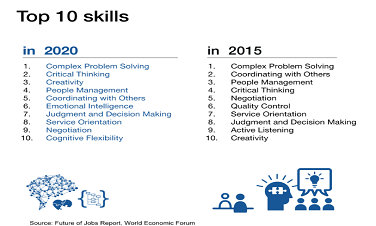Different Sections of the SOP (3 of 3)
- Written by UnivAdmitHelp
- Category: Admission Application
- Published on 24 Jan 2017

Craft Sentences and Paragraphs
Once you have developed your story line and summarized the key ideas through story board, your SOP is virtually ready. What you need to do now is to craft sentences for each of the key theme/ sentence header that you have identified.
We recommend that sentence construction within the paragraph follows a logical order that supports your ideas. This logical order could be built out in a number of ways –
- Degree order – sequencing sentences in order of importance; from most important to the least important
- Logical weight – choosing sentences in a way that they have the same logical weight.
- Time order – if there is a cause-effect relationship in the sequence of events, then the ideas should be presented in the time order, i.e. cause and then the effect.
As you draft your sentences in a logical order, be careful of the following –
- Rule of 3 – try to draft not more than 3 arguments to a particular point. So, in essence, this means that the paragraph would have the key theme followed by 3-4 sentences (representing as many supporting arguments). The rule of 3 is extremely critical. Empirical evidence has shown that busy assessors tend to lose the drift in too many details, and less than 3 usually gets them to conclude ‘not enough substance.’
- Try using active form – avoid crafting sentences in passive voice. This means, ideally, your sentences should have the action verb upfront followed by the action itself. This form of construction shows energy and is generally more persuasive.
- Avoid bloating – Try to be concise. Do not over-garnish your sentences to add unnecessary weight.
- Use ‘working English’ – Try to use the language that you are comfortable with. You don’t have to use words which are flowery or poetic to make your SOP stand out. Working English – the language of day-to-day business communication is usually the most appropriate.
Remember, it is your SOP. Be flexible with your draft and try to follow your natural style. Do not burden your SOP with elements which are not your own. You will draft a great document!
Once you have pulled together a detailed SOP, make sure that you revise it a few times. Get other people (friends and family) to look at it and assess as to how it reads from their perspective. Usually, after 10/15 iterations, your SOP should be ready.
Should you want to read more about the structured communication approach, we recommend reading Barbara Minto’s book – The Pyramid Principle: Logic in Writing and Thinking.
Other Useful Blogs
Different Sections of the SOP (1 of 3)
Different Sections of the SOP (2 of 3)
Recent Posts
-

Comprehensive List of 30+ questions that High School Indian Parents and Students ask for US Admissions..
-

Common App Essay Tips 2025
-

Best extra-curricular activities for college admission for Indian students
-

How Many Universities Should You Apply To? Expert Tips for U.S. and U.K. Admissions for Indian Students
-

Step-by-Step Guide to Creating an Exceptional Capstone Project for Indian Students




